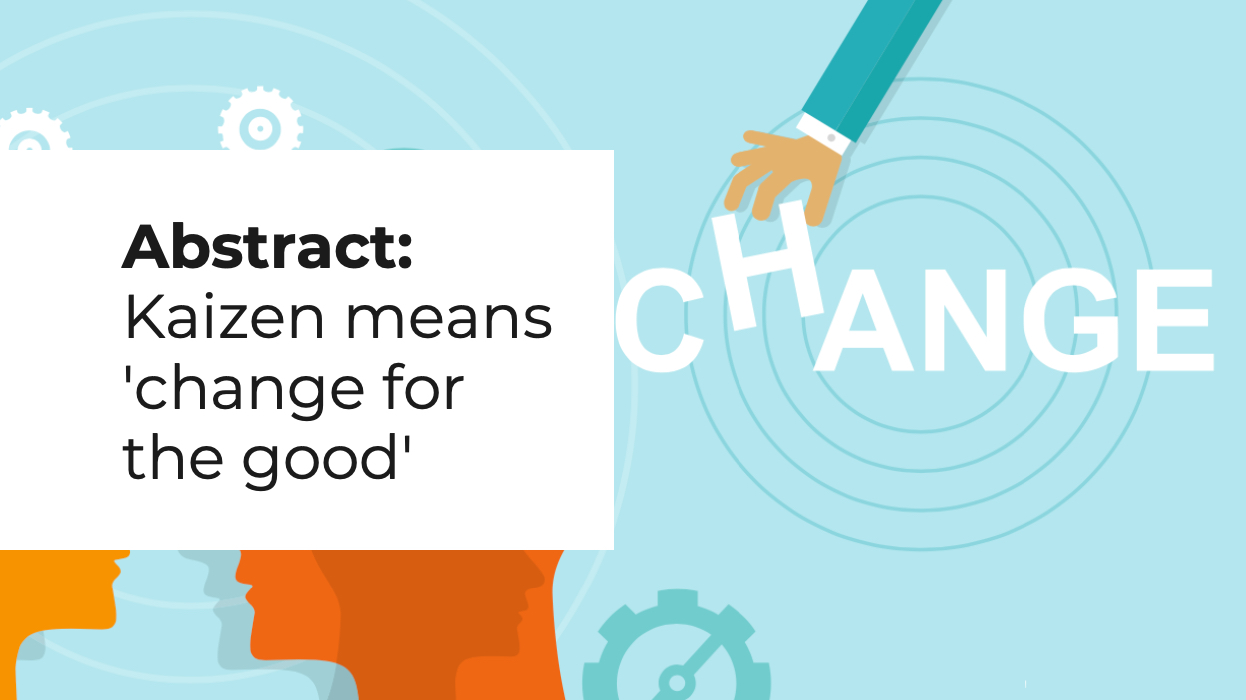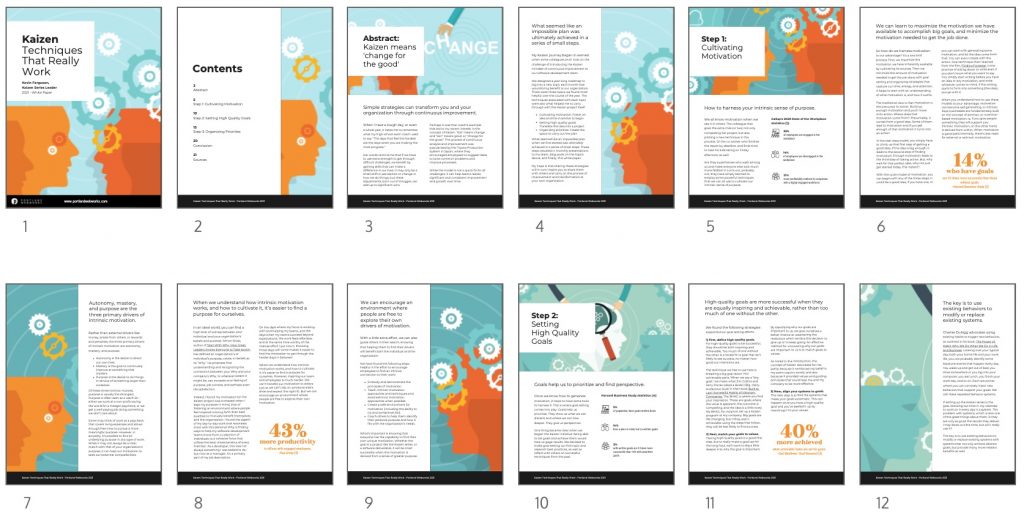My Kaizen journey began in earnest when some colleagues and I took on the challenge of introducing the Kaizen mindset of continuous improvement to our software development team. Kaizen (“kai” means change and “zen” means good, or “change for the good”) encourages employees to suggest ideas to solve common problems and improve processes.
We designed a year-long roadmap to dig into a new topic each month that would bring benefit to our organization. There were three topics I found most helpful over the course of the year. The techniques associated with each topic were also what helped me to carry through with the Kaizen project itself:
- Cultivating motivation: Foster an idea and the incentive to begin
- Setting high quality goals: Translate the idea into project
- Organizing priorities: Create the space to carry out the plan
What seemed like an impossible plan when I first started was ultimately achieved in a series of small steps. These steps resulted in monthly presentations to my team, blog posts on the topics above, and finally, this white paper.
My hope is that sharing these strategies will in turn inspire you to share them with others and carry on the process of improvement and transformation at your own organization.
<<Download the “Kaizen Techniques That Really Work” white paper>>
Learn more
- Want to work with us? Check out our current software development team job openings
- Ace Your Interview With Portland Webworks: Here’s how to set up for success in your interview with us and land the perfect job for you
- Goal Setting Techniques That Actually Work: How to create high quality goals to transform you and your organization, by Kevin Ferguson
- Organizing Techniques That Actually Work: How a few good organizing techniques can help you get your most important things done, by Kevin Ferguson
- Motivation Techniques That Actually Work: Where and how to find the motivation to lift your performance to the next level, by Kevin Ferguson
- Email us to learn more about how we can help your organization adopt an Agile process of continuous improvement

